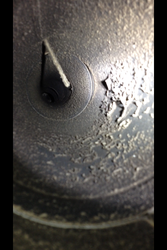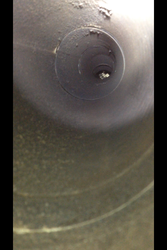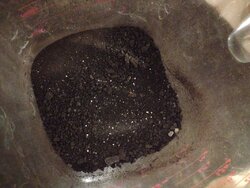Niko
Minister of Fire
Sorry fellas if i post this on our thread but he has been on the attack since i try to promote BK stoves to new hearth memebrs. This guy just seems very very unprofessional for someone that states he is in the Sweep business.
Thanks, this is the kind of real world responses I was looking for.
So when you say shut the thermostat down, you are moving it to the lowest possible setting and are then able to get your 24hr+ burn?
If I might ask too have you had any creosote build up issues? Again I'm not trying to dig at BK's. Just discuss them. I'm well aware that any and all stoves can produce excessive creosote for various reasons.
This last Fall temperatures were a little crazy, with a different in some cases of up to 40 degrees between day and night. It was like that for almost a month with some days getting up into low 70s. i didn't have to change tstat setting that much. I can tell you that 99% of the time just stays at the sweet spot that works for me. till now I never see the cat going inactive at that setting regardless the outside temp. about creosote, i went twice to the roof and disconnect sections and look, everything looks in order both times. I think the creosote problem is more into the firebox that in the chimney.
If the cat stays active at that point what is going thru is not much and the cat eat it easy. remember with bypass closed everything has to go thru the cat. at that point what's going thru it just keeping the cat active. also remember that if draft is low so is the amount of gassing from the wood, keeping a lower box temp cause the cat is not getting much fuel at same setting when it opens. this is what I think is going on in there, but i can be wrong. Take into account that this is my experience and others can have different experience based on setup, locations, draf, etc.
If i wait for my cat getting down almost into inactive zone to reload, i get screwed, cause at that point i have not enough coals to relight the new load. I always load with cat well into active zone. the 20 to 30 minute burn depending how tight i can reload takes care most of creosote in the firebox.
Last night just dropped to 30 df here and now is 42 df. I did not touch the tstat dial for nothing. i just turn the fan off early this morning. it will stays like that till tonight or when it will need reload. Hope this help
 I would just let the stove go cold if I didn't wake up screaming every time the furnace kicks on.
I would just let the stove go cold if I didn't wake up screaming every time the furnace kicks on. 
The way I avoid that to happen was: I ripped The sucker out the wall.lol. that way for sure, i don't think to have it like a back up and get mad when i had to call the propane guy. lolI feel ya on the crazy shoulder season weather. We are having similar weather right now in JanuaryI would just let the stove go cold if I didn't wake up screaming every time the furnace kicks on.

2 more hours and I'll have a 24 hour burn on less then a full load. Crazy and its 80 in the main house.
I bought one when i had the other stoves and a week later quit on me, I contacted Amazon and they send me another one. It also quit on me in about a week or so.Is anybody using one of those little thermoelectric fans atop their stove? If so does it do any good or is it largely a curiosity object for my dog to be amazed by?
Your dog doesn't understand thermo-electric coolers? [emoji14]Is anybody using one of those little thermoelectric fans atop their stove? If so does it do any good or is it largely a curiosity object for my dog to be amazed by?
Is anybody using one of those little thermoelectric fans atop their stove? If so does it do any good or is it largely a curiosity object for my dog to be amazed by?
I had one for a short time. It was free, I gladly regifted it. It's just a novelty, and they are easily destroyed by a serious wood burner.Is anybody using one of those little thermoelectric fans atop their stove? If so does it do any good or is it largely a curiosity object for my dog to be amazed by?



Mid-season cleaning:
2540 lbs of mixed hardwoods (mostly red/white oak) 12-15% MC. Yielded about 1/3 cup black powder creosote after cleaning with the sooteater:
Before cleaning:
View attachment 193310
After cleaning:
View attachment 193311
View attachment 193312
Note there is a 30 deg offset up there and it is hard to see past it, but the sooteater made it all the way to the cap.
Thanks for the reply Isucet. My question regarding creosote though is specifically about creosote in the chimney which sounds like isn't an issue for you. So obviously like any stove, good burning practices and good fuel basically negate creosote concerns. But what I'm curious about is if people have noticed a tendency to creo up a bit more or risk of it happening quickly and building up fast during times of low burning and warm outdoor temps?
I'm curious too if it's others experience that they mostly run just the same setting throughout the burning season?
Did you miss post # 171 ??Uh oh, you sooteated your probe meter!
So 2500# of oak. Is that like 3/4 of a cord?

